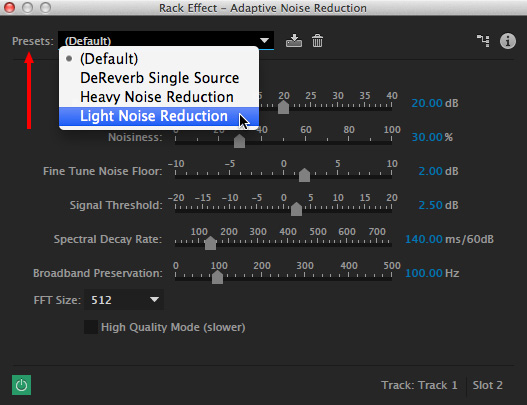How To Reduce Echo In Audition

How To Reduce Echo In Audition Date
- How to Remove Room Echo in Adobe Audition. Adobe Audition Presets! The audio presets I use. Learn how to master audio production. Removing echo and reverb using effects inside Adobe Audition CC.
- But resist the urge to scrap your audio and go straight to ADR, because you might be able to salvage that audio. There are several options you can utilize in order to save this audio, but one option that’s gaining steam within the industry is Adobe Audition. With that said, here are five tips for cleaning up your audio in Adobe Audition.
Remove Echo If this is your first visit, be sure to check out the FAQ by clicking the link above. You may have to register before you can post: click the register link above to proceed.

Complete beginner to Audition, I usually just shoot video and then edit in Premiere.
I recorded some audio in a large room with flat walls, which produced a ton of echo in the recording; you can really hear the subject's voice bouncing off the walls.
To try and fix this, I looked up a few tutorials and combined some techniques. Here's what I did:
Captured the noise print of the ambient room tone
Used noise reduction to get rid of that room tone
Used parametric equalizer to remove some annoying frequencies. Basically swiped around with a peak until I found a frequency that sounded strange, then reduced it to -15db. After lowering a few frequencies, the quality of the voice sounded much better, but it had almost no effect on the echo.
Used another parametric equalizer to enrich the voice, I guess? Very slightly increased the highs & lows and decreased the middle frequencies. This made the voice sound much more crisp and less muffled.
Added a single-band compressor. I guess this evened out the volume of the voice? It didn't make a huge difference, but still improved it a little.
There was a tutorial that recommended you lower the middle frequencies through the dynamics processing tool. I tried this, but it seemed to just lower the volume of the voice and had little to no effect on echo.
Overall, the voice now sounds much better, it's much more pleasant to listen to. However there's still a ton of echo; after the subject says something, you can hear their voice bounce around the room.
Is there anything else I could do to reduce this (without external plug-ins)? Any feedback is greatly appreciated, thanks!
There are two types of echo in an audio recording. Natural echoes and approximated echoes. The former occurs as a consequence of the acoustics in which the audio was captured. The latter is a deliberate audio effect added to create the illusion of space and depth. Some echoes are desirable and add character to a sound, other echoes are not desirable and can make an audio recording sound muddy. Fortunately, you can remove an echo from your audio using the tools in your audio software program.
Removing Natural Echo
Open the program that you used to record the audio, such as Logic or Pro Tools. If you recorded the audio without a computer and now wish to edit the audio with a computer, open your preferred audio production program and click “File.” Click “Import” and select the audio from which you wish to remove the echo. Since the echo is part of the audio as it was captured on the recording, you need to manipulate the sonic characteristics of the recording.
Open the “Noise Gate” application. Its location in the menu varies according to the program, but noise gates are typically located under “Effects” or “Plug Ins” in the “Gating and Limiting” or “Dynamics” sub-menu. A noise gate is a signal limiter. It mutes any signal under a pre-selected threshold.
Click the “S” icon on the audio track that has the unwanted echo. This solos the audio so everything else is muted.
Hit “Play” and adjust the threshold parameter on the noise gate interface. This interface governs how strong the audio signal is before the gate allows it to pass. Since the echo will be a lower level than the original sound, set the threshold so that it sits between the level of the sound and the echo. This way the original sound will have a sufficiently strong signal to breach the gate threshold, while the echo is too weak and will be muted.
Adobe Audition Echo Reduction
Removing Echo Effects
Open the program on which you recorded the audio.
Click on the track with the unwanted echo. By clicking on the track, you bring up all associated effects and parameters. These typically appear in a side-bar on the left.
Examine the display to determine which virtual effect is creating the echo. It is likely to be one of “Reverb,” “Delay” or “Tape Echo.” Reverb is a more subtle effect, similar to an echo but distinct from it in that only the ambiance is audible, rather than a recreation of the original sound. Delay and tape echo effects are more obvious.
Open each effect interface by clicking on the effect icon in the sidebar. Turn the effect off by clicking the “Bypass” button.
Play the audio back. If the echo is still there, bypass the next effect. Once you bypass the offending echo source, click “Bypass” once again on each of the effects that you tried. This brings them back into operation and returns the audio to its previous form, minus the echo.
Tips
Record audio in an acoustically dead environment. It's easier to add an echo effect than to remove a natural echo.
Video of the Day
